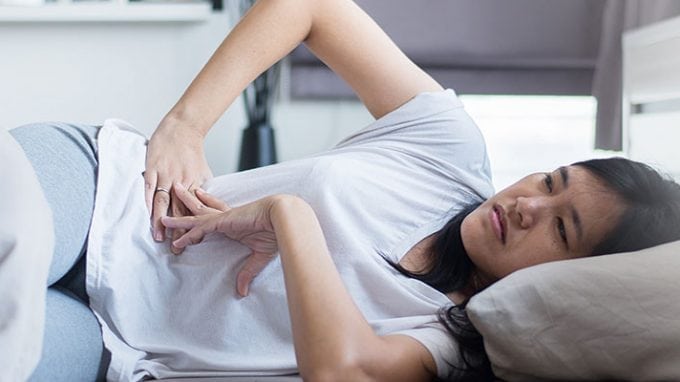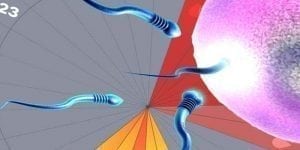When it comes to abdominal cramps and discomfort a variety of factors can be the culprit, but here’s a look at two common ones, how to tell them apart, and what that means if you’re trying to conceive.
A Look at Ovulation Pain
Ovulation is the female body’s process of releasing an egg from an ovary for fertilization. Many women cannot tell that the process is even happening unless they take tests or examine their temperatures or vaginal mucus levels. Other women, however, experience pain on their side when they ovulate. The pain can vary from mild discomfort to excruciating pain that can sometimes mimic that of appendicitis. For some women, it can be so painful that it severely disrupts the woman’s ability to function normally for the length of time that it lasts. The German word for the condition is mittelschmerz, which simply means middle pain.
Ovulation discomfort occurs mid-cycle in a woman who has a regular menstrual process. It happens on about the 14th day of a monthly cycle, and may occur as the hormones change, and stay until the egg leaves the ovary.
Women who experience mittelschmerz may experience it every month for the duration of their child-bearing years. It may change each month and occur on the side from which the ovary will release the egg. The pain may last anywhere from 12 hours to 24 hours, but it should not last any longer than one day.
The Truth About Implantation Pain
Implantation pain is something that only occurs if one of the male’s sperm has fertilized the egg. The fertilized egg burrows into the walls of the uterus, and when doing so, can sometimes cause temporary pain. In addition, bleeding may accompany this type of pain. Unlike during ovulation, implementation bleeding is much different than a normal period. Discharge may appear pinkish or brownish in color as oppose to a normal period.

Any pain that’s involved with implantation would occur at about the same time the woman is expecting her menstrual period. That’s where it differs from ovulation discomfort. Implantation pain also lasts longer than ovulation discomfort. The ovulation pain will usually max out in 24 hours, but implantation pain can last as long as three days, maybe even longer. It depends on the woman’s hormonal makeup and her body.
For women trying to conceive this pain can often be misdiagnosed as regular ovulation pain, however, this type of pain only occurs when a woman has successfully become pregnant, and it is not a recurring pain like the pain from ovulation.
The Causes of Ovulation and Implantation Discomfort
Specialists and medics are still trying to figure out the cause of ovulation discomfort, especially in women who have experienced it since the first onset of their cycles. The pain could come from the ovary’s stretching before it releases the egg. The pain could also come from the release itself. In some case, the pain comes from a disorder such as pelvic inflammatory disease, fibroids or endometriosis. A woman who experiences excruciating pain should visit a gynecologist to have it checked. The testing may not reveal any cause, however. In that case, the cause of it will remain a mystery.
The implantation pain can come from a condition within the body, as well. Ovarian cysts are sometimes the cause of such pain. Hormonal levels and ligament changes can cause it, as well. One should not be concerned if the pain is mild or if the bleeding is slight. She should only be concerned if the bleeding lasts for more than three days or is similar to that of a menstrual period in flow heaviness.
Remedies for Implantation and Ovulation Pains
Ovulation discomfort and implantation pain are short-lived experiences. Therefore, no extensive treatment plan is necessary for them under most circumstances. However, an anti-inflammatory drug is probably the best option for women who have severe discomfort. Ibuprofen is considered an excellent remedy for mittelschmerz because it reduces the inflammation, and that usually solves the problem of pain in the area. A heating pad could help to ease the pain, as well. Hot baths can be soothing during this uncomfortable time. A sufferer may want to add some eucalyptus to make the situation better. Hopefully, the period of discomfort will end quickly and she will be back to her regular activities in no time.
As with all discomfort and pain, should symptoms worsen and not dissipate over a period of time, a visit to the gynecologist or the obstetrician may be necessary to get the problem under control.




